
The Bell UH-1 Iroquois is a utility military helicopter designed and produced by the American aerospace company Bell Helicopter. It is the first member of the prolific Huey family, as well as the first turbine-powered helicopter in service with the United States military.

The Westland Wessex is a British-built turbine-powered development of the Sikorsky H-34. It was developed and produced under licence by Westland Aircraft. One of the main changes from Sikorsky's H-34 was the replacement of the piston-engine powerplant with a turboshaft engine. Early models were powered by a single Napier Gazelle engine, while later builds used a pair of de Havilland Gnome engines.

The Sikorsky H-34 "Choctaw" is an American piston-engined military helicopter originally designed by Sikorsky as an anti-submarine warfare (ASW) aircraft for the United States Navy. It has seen extended use when adapted to turbine power by the British licensee as the Westland Wessex and Sikorsky as the later S-58T.

The United States Air Force Combat Rescue School, was an organization of the United States Air Force.

Helicopter Combat Support Squadron FOUR (HC-4) was a United States Navy helicopter squadron based at Naval Air Station Norfolk, Virginia. Nicknamed the "Black Stallions", they flew the Sikorsky CH-53E Super Stallion and MH-53E Sea Dragon helicopters.

Helicopter Training Squadron EIGHT (HT-8) is a United States Navy helicopter training squadron based at Naval Air Station Whiting Field in Milton, FL. The squadron's mission is helicopter pilot training for U. S. Navy, U. S. Marine Corps and U. S. Coast Guard Student Naval Aviators and for selected foreign military flight students from basic helicopter flight training through winging. Student Naval Aviators report to HT-8 for helicopter training upon completion of primary flight training conducted in the T-6B Texan II U. S. Navy primary flight trainer. HT-8 flies the TH-73A Thrasher, an

The United States Marine Corps Aviation (USMCA) is the aircraft arm of the United States Marine Corps. Aviation units within the Marine Corps are assigned to support the Marine Air-Ground Task Force, as the aviation combat element, by providing six functions: assault support, antiair warfare, close air support, electronic warfare, control of aircraft and missiles, and aerial reconnaissance. The Corps operates rotary-wing, tiltrotor, and fixed-wing aircraft mainly to provide transport and close air support to its ground forces. Other aircraft types are also used in a variety of support and special-purpose roles. All Marine Corps aviation falls under the influence of the Deputy Commandant for Aviation, whose job is to advise the Commandant of the Marine Corps in all matters relating to aviation, especially acquisition of new assets, conversions of current aircraft, maintenance, operation, and command.

Helicopter Sea Combat Squadron 25 (HSC-25) "Island Knights" is a United States Navy helicopter squadron based at Andersen Air Force Base, Guam. The "Island Knights" of HSC-25 fly the MH-60S "Knighthawk" helicopter, manufactured by Sikorsky Aircraft Corporation in Stratford, Connecticut.
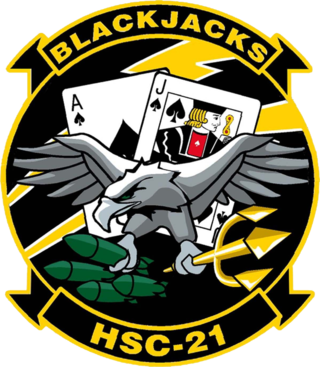
Helicopter Sea Combat Squadron 21 (HSC-21), nicknamed "Blackjacks", is an aviation unit of the United States Navy based at Naval Air Station North Island. HSC-21 is made up of five expeditionary detachments that deploy aboard ships including Combat Logistics Force support ships, Hospital Ships and Amphibious Assault ships, among others. HSC-21 flies the Sikorsky MH-60S Seahawk helicopter.
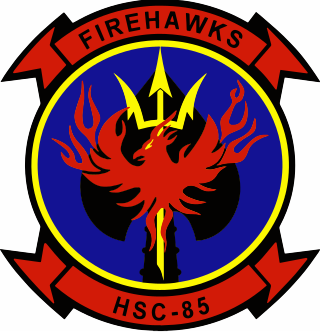
Helicopter Sea Combat Squadron EIGHT FIVE (HSC-85) was a United States Navy Reserve forces helicopter squadron (RESFORON) based out of Naval Air Station North Island in San Diego, California. The "FIREHAWKS" of HSC-85 are Reserve and Active Component Sailors who operate and maintain Sikorsky MH-60S Seahawk helicopters.

Helicopter Sea Combat Squadron THREE , is a United States Navy multi-role combat helicopter squadron based at Naval Air Station North Island in San Diego, California which operates the Sikorsky MH-60S Knighthawk helicopter to train aircrew and support fleet development on the MH-60S for the Commander Helicopter Sea Combat Wing, U.S. Pacific Fleet. The squadron was established on 1 September 1967 at Naval Air Station Imperial Beach with the Boeing Vertol CH-46 Sea Knight to provide vertical replenishment (VERTREP) services on the West Coast, and was redesignated HSC-3 on 1 April 2005.

The 563rd Rescue Group is a United States Air Force unit stationed at Davis-Monthan Air Force Base, Arizona. The group also controls the rescue squadrons at Nellis Air Force Base, Nevada. It is assigned to the 355th Wing. The group directs flying operations dedicated to personnel recovery and is part of Air Combat Command. The group was activated under its current designation at Davis-Monthan in 2003 to command rescue units in the western United States.
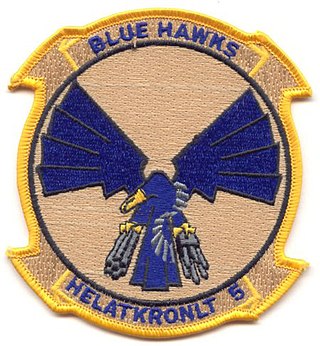
Helicopter Attack Squadron (Light) Five, known by the US Navy designation HA(L)-5, was the initial designation of a Naval Special Warfare and close air support helicopter squadron in the period following the Vietnam War, which, along with its sister squadron HA(L)-4 "Red Wolves", was one of the last two US Navy squadrons using HH-1K "Huey" gunships. In October 1989 the squadron was redesignated Helicopter Combat Support Squadron Special Five (HCS-5), it adopted the name "Firehawks" and it traded in its "Hueys" for HH-60H Seahawk Combat Search and Rescue helicopters. The squadron was deactivated on 13 December 2006.
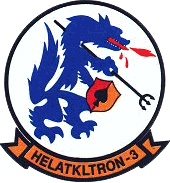
HA(L)-3,, nicknamed the "Seawolves", was an all-volunteer squadron in the US Navy formed in support of Naval Special Warfare operations and Mobile Riverine Forces during the Vietnam War.
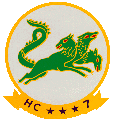
Helicopter Combat Support Squadron Seven (HC-7) was a helicopter squadron of the United States Navy established on 1 September 1967 and disestablished on 30 June 1975.

Helicopter Sea Combat Squadron 2 , also known as the "Fleet Angels", is a helicopter squadron of the United States Navy based at Naval Station Norfolk operating the Sikorsky MH-60S Seahawk. The Fleet Angels are a Fleet Replacement Squadron providing trained MH-60S crew to units on the East Coast.
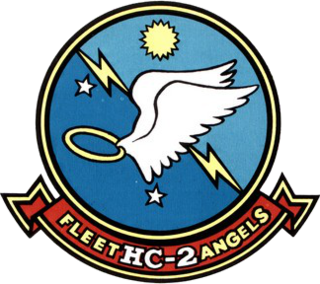
Helicopter Combat Support Squadron 2 (HC-2), also known as the "Fleet Angels", was a multi-role helicopter squadron of the United States Navy based at Naval Air Station Jacksonville. The squadron was established on 1 April 1948 and remained active until disestablished on 30 September 1977.

















